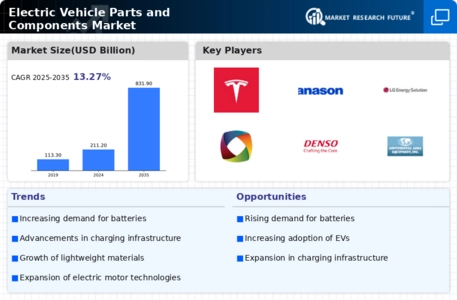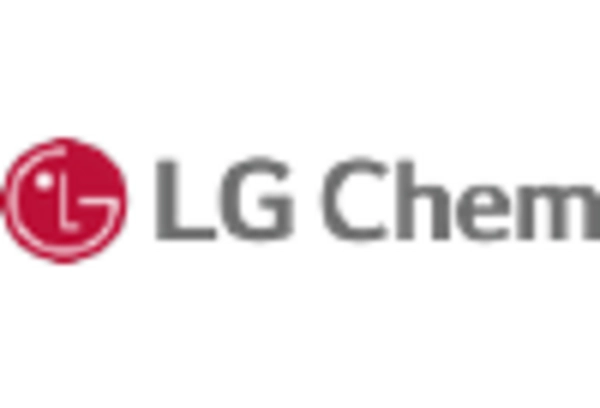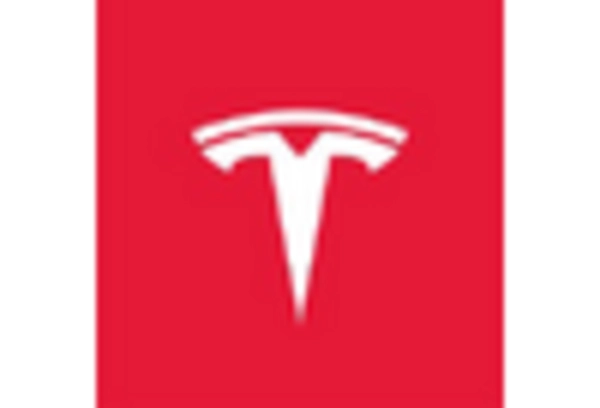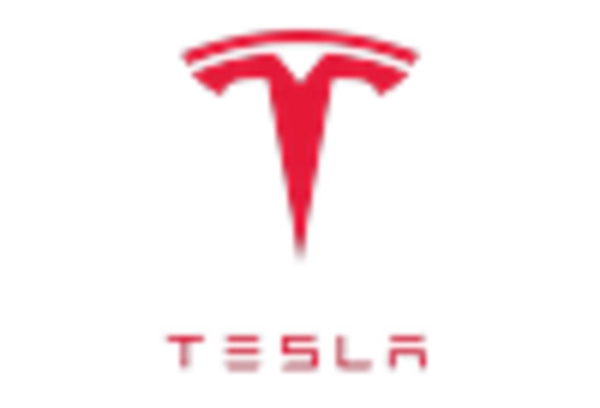Expansion of Renewable Energy Sources
The expansion of renewable energy sources is significantly impacting the Electric Vehicle Parts and Components Market. As the world moves towards sustainable energy solutions, the integration of renewable energy into the electric vehicle ecosystem is becoming increasingly important. In 2025, it is anticipated that renewable energy will account for over 50% of the electricity used for charging electric vehicles. This shift not only enhances the environmental benefits of EVs but also drives the demand for components that support renewable energy integration, such as smart charging systems and energy management solutions. The Electric Vehicle Parts and Components Market is thus poised to benefit from this trend, as the synergy between electric vehicles and renewable energy sources fosters a more sustainable transportation future.
Government Incentives and Regulations
Government incentives and regulations play a crucial role in shaping the Electric Vehicle Parts and Components Market. Many countries have implemented policies aimed at promoting the adoption of electric vehicles, including tax credits, rebates, and grants for both consumers and manufacturers. For instance, in 2025, several regions are expected to enforce stricter emissions regulations, further encouraging the transition to EVs. These regulatory frameworks not only stimulate demand for electric vehicles but also create a favorable environment for the growth of the parts and components market. As manufacturers adapt to these regulations, the Electric Vehicle Parts and Components Market is likely to witness increased investment in research and development, leading to advancements in technology and efficiency.
Increasing Demand for Electric Vehicles
The rising demand for electric vehicles (EVs) is a primary driver of the Electric Vehicle Parts and Components Market. As consumers become more environmentally conscious, the shift towards EVs is accelerating. In 2025, it is estimated that the sales of electric vehicles will surpass 10 million units annually, indicating a robust growth trajectory. This surge in demand necessitates a corresponding increase in the production of essential parts and components, such as batteries, electric motors, and power electronics. Consequently, manufacturers are compelled to innovate and enhance their offerings to meet the evolving needs of the market. The Electric Vehicle Parts and Components Market is thus positioned to benefit significantly from this trend, as automakers seek to optimize performance and sustainability in their vehicle designs.
Growing Consumer Awareness and Acceptance
Consumer awareness and acceptance of electric vehicles are pivotal factors influencing the Electric Vehicle Parts and Components Market. As information about the benefits of EVs becomes more accessible, consumers are increasingly recognizing the advantages of electric mobility, including lower operating costs and reduced environmental impact. In 2025, surveys indicate that over 60% of potential car buyers are considering electric vehicles as a viable option. This shift in consumer perception is driving automakers to expand their electric vehicle offerings, thereby increasing the demand for various parts and components. The Electric Vehicle Parts and Components Market stands to gain from this growing acceptance, as manufacturers align their production strategies with consumer preferences.
Technological Innovations in EV Components
Technological innovations are transforming the Electric Vehicle Parts and Components Market. Advancements in battery technology, such as solid-state batteries and improved energy density, are enhancing the performance and range of electric vehicles. In 2025, the market for advanced battery systems is projected to reach USD 100 billion, reflecting the critical role of innovation in driving growth. Additionally, developments in electric drivetrains and lightweight materials are contributing to the overall efficiency of EVs. As manufacturers strive to differentiate their products, the demand for cutting-edge components is expected to rise. This trend underscores the importance of continuous innovation within the Electric Vehicle Parts and Components Market, as companies seek to maintain a competitive edge.






















Leave a Comment